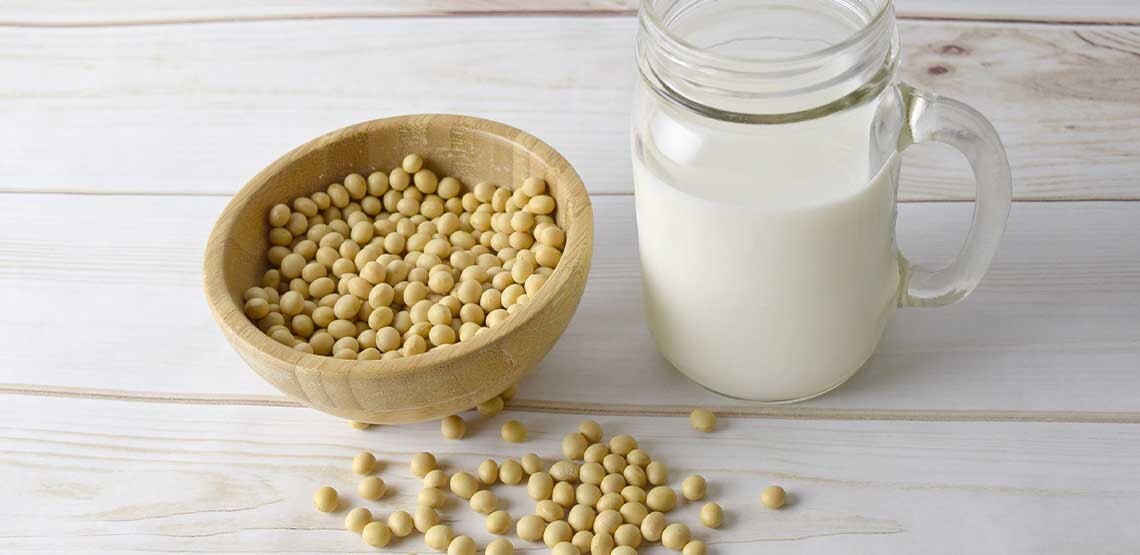Is Soy Bad for You?
Are you uncertain about soy? You’re not alone. Soy’s reputation is both good and bad. On the one hand, it lands on many health food lists as a wonder food. Proponents of soy claim that it wards off osteoporosis, stabilizes insulin, and protects against cancers and dementia. On the other hand, naysayers believe it disrupts the body’s hormones, causes breast cancer, and increases the risk of dementia. Which one is it? Let’s find out.
What is Soy?
Soy comes from soybeans, which are legumes (from the pea family) from Asia. Soybeans are high in protein and can be prepared in a variety of ways, which makes it a staple — especially in vegetarian and vegan cooking.
There are three types of soybeans:
Green Soybeans
Edamame, meaning “stem beans” in Japanese, are immature green soybeans. They are rich in nutrients and an excellent source of protein, iron, and calcium. The young green soybeans are typically steamed, shelled, or consumed straight from the pod. Edamame is also incorporated into stir-fries, soups, and salads or eaten as an appetizer.
Yellow Soybeans
A favorite option for meat replacement, yellow soybeans are used to make tofu, tamari, and soy milk. Yellow soybeans are also essential for non-gluten diets and can replace wheat flour for baking. They make an excellent replacement for meat products and dairy, making them favorites of vegans and vegetarians.
Black Soybeans
Black soybeans are packed with protein, fiber, vitamins, minerals, and antioxidants. They are an inexpensive, complete source of plant-based protein, just like the yellow soybean! Soy sauce, made from fermented black soybeans, is a staple ingredient in Asian dishes.
Culinary Sources of Soy
Surprisingly, soy is available in all types of foods, not just in Asian dishes. For example, soy sauce is made from fermented soybeans and is an ingredient in many Western sauces and seasonings. Soy milk, a popular dairy substitute, is a go-to cream alternative at coffee shops. Other sources of soy include tofu, soy-based meat alternatives, soybean oil, and soy flour.
Related Search Topics (Ads)
Nutritional Content
As far as soy’s nutritional content goes, it is a powerhouse. It contains all nine essential amino acids, which is uncommon in plant proteins. Typically found in animal proteins like beef and eggs, soy provides enough amino acids to replace meat in a vegan or vegetarian diet.
In addition, it's high in fiber, helping to digest food more efficiently and lower cholesterol. With 10 grams of fiber per cup, it gives more fiber per cup than other proteins. It's also high in fat — the good kind. Unlike meat, almost 90% of the fat in soy is polyunsaturated instead of the high amounts of saturated fats in meat.
Other nutrients include isoflavone content, B vitamins, vitamin C, folate, magnesium, fiber, potassium, and high-quality protein. A cup of soybeans, for example, contains 886 milligrams of potassium. That amount is more than the potassium contained in a banana.
Health Benefits
A 2015 research study evaluated the impact of soy on people’s cholesterol levels. The studies found that soy significantly reduced their total cholesterol levels and low-density lipoprotein (LDL) cholesterol. Conversely, it also raised levels of “good cholesterol,” high-density lipoprotein (HDL). People who already had high cholesterol (compared to people with normal levels) saw the most improvement in their cholesterol numbers when eating it.
In 2017, a comprehensive study found that soy consumption resulted in numerous health benefits. For example, it was found to be high in antioxidants, helped manage blood sugar, and reduce the risk for prostate cancer.
The journal Molecules published a 2019 study evaluating the influence of soy isoflavone supplements on weight. Researchers found that soy isoflavones kept fat from building up around the rats’ organs, keeping their body weight in check. Another study from 2019 found that soy isoflavones may also help in reducing the risk of breast cancer. Asian women who ate soy isoflavones had a lower risk of cancer. Soy isoflavones may help reduce the risk of cancers in general, not only breast cancer.
Health Risks
The same factors that give so much of its beneficial elements are also what cause soy’s potential health risks. Soy isoflavones are a form of plant-based estrogen, leading many people to believe that consuming it can disrupt estrogen levels.
However, soy isoflavones are much weaker than natural estrogen. This means that for it to negatively impact a person’s health, a person would have to consume it in large amounts. A 2018 study, for example, showed only a weak association between soy as a cause of cancer.
The Verdict
So, is it bad for you? According to the American Cancer Society (ACS), the evidence thus far does not indicate that soy is bad for a person’s health — if eaten within reasonable amounts. The American Cancer Society does advise against taking soy supplements, which contain higher amounts of soy isoflavones than is found in food sources. Therefore, in short, it's an excellent addition to a balanced and healthy diet.
With the current research in mind, the benefits far outweigh any health risks. Incorporating soy into your diet and periodically replacing meat products can lower your cholesterol levels and guard against cancer. It's an excellent plant-based, nutrient-dense source of protein and fiber. Just remember to keep your consumption to a moderate amount. As with most things, too much of a good thing is bad for you.


